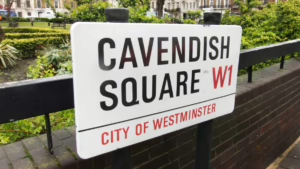
UK pay awards have remained consistent, with the median basic increase staying at 3 percent in the three months to the end of April 2025, new data shows. However, while the headline figure shows stability, underlying trends suggest that more employers are applying caution to pay decisions.
Data from HR consultancy firm Brightmine, based on 136 pay settlements covering over 309,000 employees, shows that almost half of all pay awards recorded during this period came in below the 3 percent level – meaning that organisations are responding conservatively to ongoing cost pressures despite some early signs of economic recovery.
Employers faced a range of cost increases during April, including higher council tax, utility bills and National Insurance contributions. These factors, combined with broader uncertainty, have been labelled “Awful April” by some observers, as they added new challenges to already cautious wage setting.
Cautious response to pressures
Sheila Attwood, HR Insights and Data Lead at Brightmine, noted that April’s data often sets the pace for pay deals across the rest of the year.
“While the latest economic data show signs of growth, the subdued pattern of pay settlements indicates that many employers continue to approach wage decisions with caution in the face of ongoing cost pressures that will continue into the second half of the year.
“Pay awards are stable, but beneath the surface, many businesses are opting for lower rises and our headline median could therefore fall in the months ahead,” she said.
Private and public sector pay awards gap likely to narrow
In the 12 months to the end of April 2025, the median pay award in the private sector was 3 percent, matching the overall figure. Public sector awards, however, recorded a higher median of 5 percent, largely due to previously agreed deals that were carried over from earlier in the pay cycle.
This disparity may not continue. Brightmine’s analysis suggests that future public sector settlements will more closely reflect private sector patterns. “The data shows that while the public sector appears to be ahead on paper, this reflects past decisions rather than current trends,” said Attwood. “Looking ahead, we expect public sector pay awards to mirror the more restrained approach we are now seeing in the wider economy.”
The Brightmine dataset shows that pay restraint is becoming more widespread. In a matched analysis of 2025 and 2024 pay deals, 78.1 percent of 2025 awards were lower than those agreed in the previous year. Only 3.1 percent were higher. A small proportion of deals (5.1 percent) were pay freezes, indicating that some employers are making no increases at all.
Navigating the balance
Despite this, the most common individual award remained at 3 percent, followed closely by 2 percent. This pattern held across both basic pay and performance-related increases, suggesting that employers are not significantly altering pay structures even as overall settlement levels shift downward.
The figures show that while UK employers may have welcomed the unexpected 0.7 percent GDP growth in the first quarter of 2025, this has not translated into more generous pay outcomes. Instead, wage decisions are being shaped by ongoing financial pressures and a cautious outlook for the rest of the year.
HR professionals and reward managers are advised to monitor developments closely, particularly as wider economic data may not fully reflect the challenges faced by organisations. Pay benchmarking remains critical as businesses navigate the balance between cost control and employee retention in a period of uneven recovery.



